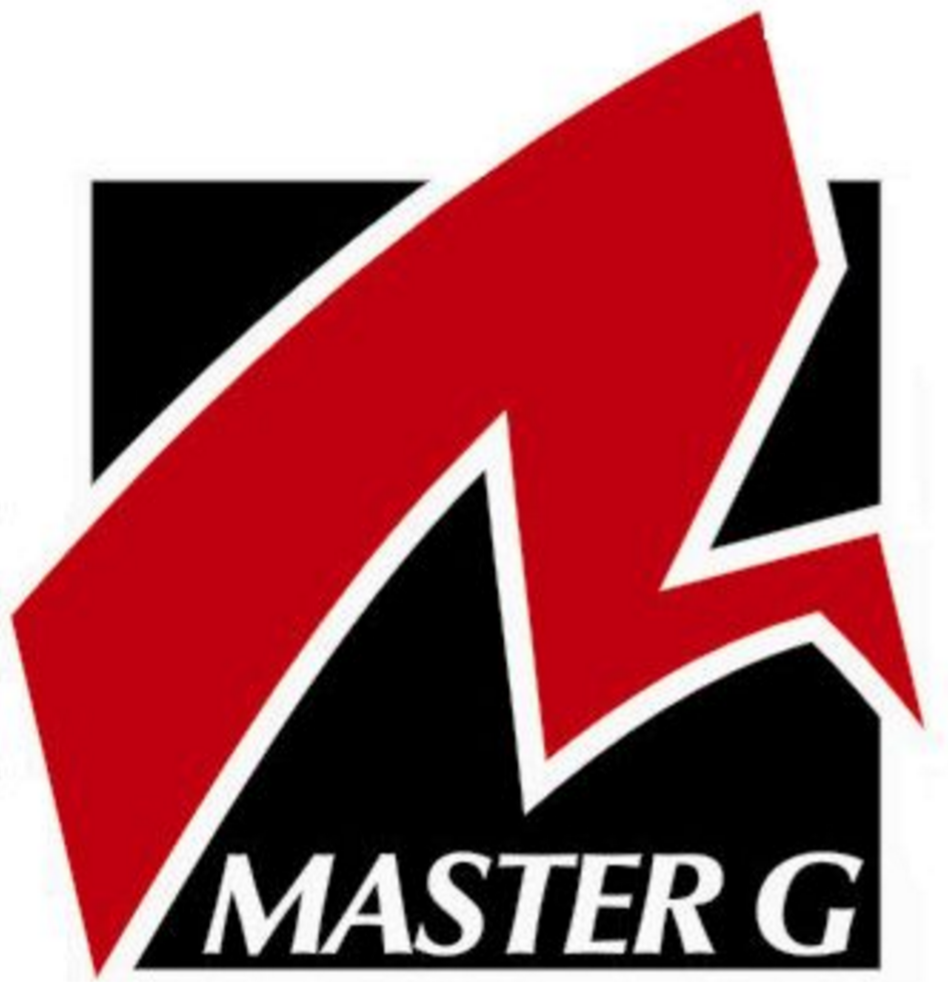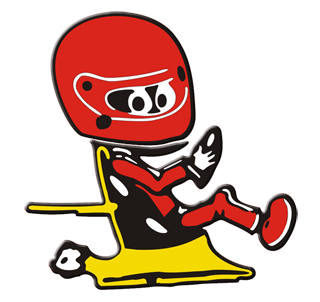
Diversos - Diversos
RECORDAR É VIVER
Segunda, 06 Novembro 2017 18:18 | Actualizado em Sexta, 05 Abril 2024 08:53
Fez no passado domingo meio século. O dia em que Jim Clark, Jochen Rindt e Ludovico Scarfioti correram no NASCAR. Ou seja, quando NASCAR se encontrou com Indy, Le Mans e F1 em Rockingham.
For a few days in the fall of 1967, Scotland's Jim Clark and Austria's Jochen Rindt spent their afternoons at the Rockingham Speedway and returned to a North Carolina motel at night. Two Formula One icons in an very unfamiliar setting. When one thinks of the glamour of '60s Grand Prix racing, the image of Dixie in autumn is never considered. These two men are some of the biggest figures in Formula One history, and for one race, they were in the midst of Petty, Pearson, and Allison in powerful, heavy NASCAR racers.
On Sunday October 22, 1967, two-time F1 champion, Jim Clark, was standing with a wreath of laurels around his neck in Mexico City after winning the Mexican Grand Prix driving a Lotus. It was a prestigious moment for Clark as that was his 24th victory, tying him with Juan Manuel Fangio for most all-time wins. According to formula1blog.com, Clark, Jackie Stewart, and Jochen Rindt went directly from Mexico to the Bahamas, vacationing after the Formula 1 season ended. With some of the world's biggest racing names hanging around North America, NASCAR officials hoped for a miracle.
It's easy to say that the life of a race car driver was more fluid 50 years ago than it is today. There were less contracts to overcome and teams didn't forbid their drivers from running other series. Shortly after arriving in the Bahamas, Bill France called Clark to see if he could entice him into racing in the American 500 at Rockingham that weekend. Not long after, a Western Union telegram was delivered to Clark from John Holman of the famed Holman-Moody team, offering him a race car. Eight months earlier, Mario Andretti drove one of the team's cars to an upset win in the Daytona 500. With a competitive car promised, Clark was convinced to end his vacation early. Seeing a great opportunity, NASCAR tried to get Jackie Stewart as well.
With the American 500 expected to last over five hours, it was unclear if Clark could run the entire event with him being used to running shorter races in lighter cars. Jackie Stewart, having run the Indianapolis 500 the past two years and a two-time F1 winner, would be an ideal relief driver for a European superstar car. But reportedly, Stewart turned down the offer which was then accepted by Jochen Rindt, an Austrian who had won the 24 Hours of Le Mans, competed in the 1967 Indy 500, but at the time had no F1 victories. Rindt's significance as a driver would come three years later, winning the 1970 Formula One Championship but dying in the final race. The two men were entered as co-drivers with Clark being the primary driver.
The news of two Formula One stars racing in NASCAR was published in the pages of newspapers on Tuesday. While Clark had never raced in NASCAR before, the event at Rockingham was actually the second time he had driven a NASCAR race car. In March 1962, Fireball Roberts invited the Scotsman to test his Pontiac at Daytona.
The American 500 featured one of the most diverse, superstar entry lists that NASCAR has ever seen. In addition to Clark and Rindt, 1966 Italian GP and Le Mans winner, Ludovico Scarfiotti was entered in a Plymouth. A.J. Foyt would drive a Ford for Banjo Matthews. Earlier in 1967, Foyt had won his third Indianapolis 500, the 24 Hours of Le Mans, and would go on to win that year's Indycar championship. Gordon Johncock would drive a Bud Moore Mercury after coming off an Indycar win in California that week. It was the only instance in which both the previous week's Indycar and Formula One winners competed in a NASCAR race. Among the series regulars, Richard Petty entered the event having won 14 of the last 17 Cup races and already clinched the season championship. Clark's teammates at Holman-Moody were David Pearson and Bobby Allison, the latter also making his first start for the team.
Practice for the American 500 began on Tuesday and Clark arrived at the track that afternoon. The starting lineup was set by four rounds of qualifying between Wednesday and Saturday. Eight positions were set each of the first three days and the rest of the field was filled on Saturday.
The World Champion's copper-colored Ford Fairlane featured a white roof and the number 66 on a black circle base. From the beginning, it was clear the biggest problem for the effort was Clark's inexperience in stock cars. He had to learn the cars, learn the track, and really couldn't help the team make adjustments. They never even attempted to make a qualifying run on the first day while teammate, David Pearson, claimed the pole. As the entry came together in basically one day, the car was prepared very quickly and needed a veteran's touch to fine tune the setup.
In Thursday's practice, Holman-Moody got help from other Ford factory drivers to test Clark's Fairlane. Bobby Allison, Cale Yarborough, and LeeRoy Yarbrough took turns circling the mile-long speedway and the crew changed problematic wheel bearings. Allison's best speed was about a mile per hour faster than the Scotsman's.
Later that afternoon, Clark sought to qualify the car on what was the second day of time trials. He was reasonably annoyed when informed qualifying ended an hour and a half earlier than he figured.
"I thought it was 5:00. These bloody people don't tell you anything," Clark ranted to reporter Gene Granger. With the setup improved, the team was ready to qualify the following day. The co-driver of the Fairlane, Jochen Rindt, arrived in North Carolina that evening.
Jim Clark's NASCAR effort hit a lowpoint when it came time to qualify. All positions were set by a four-lap average speed and right after taking the green flag to start his first lap, Clark suffered a catastrophic mechanical failure.
An AP news story stated that entering turn one, "the front front wheel came off the car. The machine spun wildly across the track, then upward to smack the high steel guard rail, finally coming to rest in the infield grass. The wheel climbed the high guard rail, sped down a 70-foot embankment and rolled about 300 yards before it stopped on an airfield that serves the track." From the time he pulled onto the track, Clark realized something was wrong with the car but didn't know what it could be.
"I wasn't alarmed," he said, "but I decided I would continue and perhaps the trouble would correct itself. I almost blew the bloody thing out of the track. It was quite a wild ride for a wee bit." The car suffered body damage in addition to a bent right-front spindle. After a late night of repairs, the car was good as new by Saturday morning.
When it came time to make a qualifying run on Saturday, the Scotsman was once again plagued by bad luck. Directly before Clark started his second attempt at making the field, J.T. Putney blew an engine in turn one. Reports stated that he left a 300 yard trail of oil through the turn that wasn't properly cleaned before Clark's run. The World Champion was slowed in that part of the track but his four-lap average of 114.349 mph was fastest of the day and earned him the 25th starting spot. By that point in the week, his quickest lap of the run was only one-tenth of a second off the fastest lap anyone had run.
Before the race began, Clark's 25th starting position was improved by one spot when Ludovico Scarfiotti's 23rd spot was disallowed. Because the front of his Plymouth was too low, the Italian racer was not allowed to compete.
While it was originally planned to have Jochen Rindt drive the second half of the event, by race morning those plans were in doubt. In the two days that Rindt was at the speedway, he only drove about 20 laps of practice. Plus, the difference in the two men's heights was a concern. Clark was of average build at 5 foot 8, while Rindt stool at a slender 6 foot. It seemed that by Sunday morning, Clark had decided to run the entire race himself.
With the added attention on the international superstars, the American 500 was run before a sold-out crowd of 53,000 attendees. When the race began, Clark stayed out of trouble and started moving through the field. On lap 57, Jim Paschal, James Hylton, and G.C. Spencer crashed hard on the backstretch. As they slid to the inside wall, Clark navigated safely through the spinning cars ahead of him. As the team made pitstops and the race went on, the World Champion climbed into the top-15 as the field stayed tight.
Unfortunately, Clark's race came to an end on lap 146. Running in 13th and two laps down, the 427 cubic inch Ford engine suddenly blew. Credited with a 30th place finish, the result was a disappointing end to a wild week. While Holman-Moody teammate, Bobby Allison, took the victory, Clark spoke to reporters about his effort.
"I enjoyed it, but it's quite different than Grand Prix racing," Clark told the AP. "But the competition is closer and you have to make your judgments quicker. Particularly going into the oval track corners, you make mistakes in braking and quite frequently overshoot the turns. I did it several times, but I'm glad I got a chance to see how I could do." Jochen Rindt enjoyed the race as well, albeit as a spectator.
"I sat on a tire in the pit area and had a good view of the race," Rindt told the AP. "We had planned to change drivers about the halfway mark, but Jimmy was going so well I doubt that we would have. After all, I had only 20 laps of practice."
Both drivers told the Spartanburg Herald they hoped to return next year. "I was happy to come from 25th to 13th," Clark said. "The next chance I get to drive a stock car will be about this time next year."
"If I can get a good ride I would love to race next year," Rindt added.
Tragically, neither driver returned to NASCAR. Five months after the American 500, Jim Clark died during a race in Hockenheim, Germany. Jochen Rindt died at Monza in September 1970 without another stock car race. Until Jacques Villenueve's debut in 2007, Clark's race was the only time a former F1 champion ran a Cup Series race. And it was a great display of this icon's ability to race anything.
Estamos sempre na busca da melhor informação, tentamos sempre prevalecer a imagem e a informação escrita, tornando a leitura mais rápida e acessível a todos os leitores.
João Raposo
+351 913 353 070
jraposo-air@portugalmail.pt
Copyright © TouchMobile & Design 2017



 Total de visitas
Total de visitas









